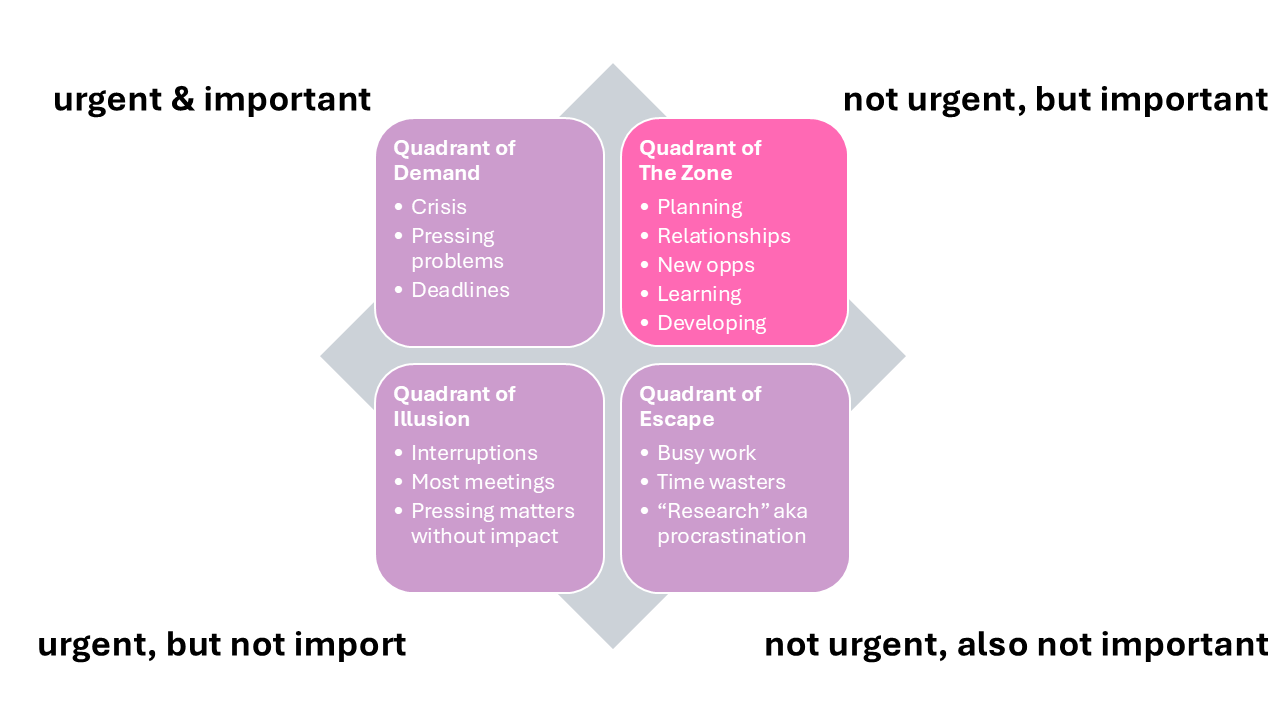Unmeasured: Part 2 – The difference between running and changing your business

Only measuring the visible half
In Part 0, I opened the series with a core challenge: How do we measure productivity in knowledge work when the work itself is abstract, dynamic, and often invisible? In Part 1, I unpacked how measurement tends to flatten complex human effort into simple outputs—units, tickets, hours, tasks.
Now in this part 2, we shift the lens from what we measure to where we measure. And the problem becomes clear: most organizations are only measuring the half of the work they can see: Running the Business, while ignoring the less visible but more impactful work of Changing the Business.
The comfort of the tangible
Dashboards are filled with numbers that signal control: cases resolved, hours billed, emails sent, campaigns launched. These are the markers of Run-the-Business performance. They feel satisfying because they’re concrete, immediate, and easy to quantify.
But there’s a trap here.
Tangible results are often short-term by design. They represent activity, not necessarily progress. Running the business efficiently doesn’t guarantee you’re heading in the right direction; it just means you’re moving fast.
In contrast, the work of Changing the Business is
- Messy
- Hard to measure
- Long-term by nature
- Usually intangible until much later
And yet, this is the work that drives real transformation. Strategy. Design. Capability building. Cultural change. These don’t show up in weekly reports, but they shape the next five years.
Run vs. change: The divide that shapes behavior
We often use “Run the Business” and “Change the Business” as simple labels, but their influence is anything but simple:
- Run is visible, urgent, and metric-friendly. It thrives in dashboards.
- Change is invisible, patient, and risk-laden. It often struggles for airtime.
Because Run work is easier to track, it becomes the default priority. That’s not just a reporting issue; it’s a behavioral one. When the organization rewards delivery over discovery, people adapt. They chase what’s measurable, even when it’s not meaningful.
The Eisenhower Matrix: Where Change Gets Lost
Let’s map this out using the Eisenhower Matrix:

“Run the Business” activities dominate the Urgent half. They feel vital, because they are. But they can also crowd out the Important half where Change work lives.
The most impactful work is rarely urgent. It’s strategic, slow-cooked, and context-heavy. But because it’s not immediately tangible, it’s the first to be postponed or deprioritized when the calendar fills up, especially, as there are rarely any passive-aggressive emails that state to be a “friendly reminder” or “bump this up in one’s inbox”. Change work is usually not depending on deadlines, nor does iit usually originate from someone else’s ideas.
The GenAI shift: productivity boost or treadmill acceleration?
Now enter Copilot and other GenAI tools. They promise a huge leap in productivity by handling summaries, content drafts, meeting notes, and even analysis.
That’s a game-changer for Run work. Copilot excels (pun intended) at accelerating the visible. But what does that mean for the invisible?
We now face a choice:
- Accelerate the status quo, using AI to do the same tasks faster, creating space that gets filled with more of the same. (If you think that won’t happen, please dive into the beautiful rabbit hole of Parkinson’s Law)
- Redesign the system, using the space AI creates to invest in strategic thinking, experimentation, and long-view transformation (but how do we justify this towards middle management with reliable stats 🤡)

Copilot can help us Change the Business, if we’re intentional. If not, it simply deepens our addiction to the tangible.
Why we need to measure the invisible
The obsession with short-term, measurable outcomes doesn’t just distort reporting; it distorts decision-making. It leads to
- Undervaluing the people doing strategic or enabling work
- Underfunding initiatives that take longer than a quarter
- Mislabeling the slow, invisible work of systems change as unproductive
And yet, it’s precisely that work—planning, learning, experimenting that builds future value. We don’t feel the loss until it’s too late, as this is only noticeable in retrospective.

A new approach to measurement
To work smarter, not just faster, we need to
- Surface the critical but hard-to-measure activities: coaching, stakeholder alignment, redesign work
- Elevate metrics that track readiness, resilience, and options, not just velocity.
- Use the capacity unlocked by GenAI to push deeper into transformation—not just crank the handle faster. AI should be your catalyst, not your crutch.
- Pair operational metrics with insight-driven narratives. Numbers show activity; stories reveal impact.
Closing thought
We’re measuring the wrong half of the work. And we’re doing it with tools that are getting sharper, faster, and more seductive.
But if we don’t rebalance how we measure, we’ll keep winning at the wrong game. More emails. More deliverables. More output, without outcomes.
Part 3 will dive into agility—why so many teams look agile but don’t act agile, and how measurement plays a hidden role in that illusion.
More parts of this series
Some resources
Published on:
Learn more